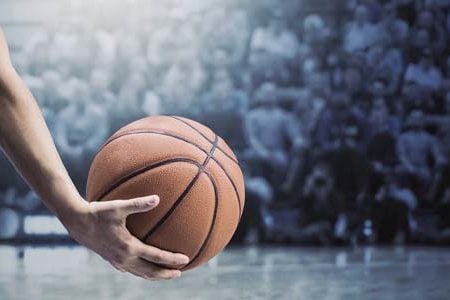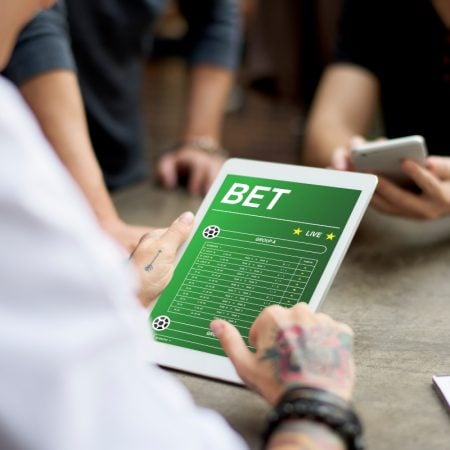When placing wagers on NCAA men’s basketball, knowing how odds work is not only important, it’s essential. If you are one of the thousands following the NCAA basketball betting in California, it only gets more essential. While the state hasn’t set up official sportsbooks, bettors have found ways to circumvent the legal roadblocks. In this scenario, every advantage is useful, especially when dealing with inconsistent lines, unrecognized teams, unpredictable contests, and fluctuating odds.
Understand How NCAAB Odds Actually Work
Start here. No smart betting happens without knowing what you’re looking at on the odds screen.
NCAAB odds — or NCAA men’s basketball odds — usually come in three forms: point spreads, moneylines, and totals (aka over/unders). For example, a sportsbook might show:
- UCLA -4.5 vs. Arizona
- Moneyline: UCLA -180 / Arizona +150
- Total: 142.5
That means UCLA needs to win by at least 5 points to cover the spread. On the moneyline, betting $180 on UCLA gets you $100 profit, while a $100 bet on Arizona nets $150 if they win. If you bet the over and the teams combine for 143 points or more, you win.
Know how each type of bet pays and what exactly needs to happen for you to cash out.
Why NCAAB Odds Are Tricky
NCAAB odds can change quickly. Unlike professional franchises, college teams lack cohesiveness, and a single injury, suspension, or coaching change can alter a team’s competitiveness. Add in the fact that there are over 350 teams in Division I — many of them scarcely covered by the national media — and you have a betting market that consists of well-done odds on major matchups and poorly set odds on lesser games.
Sportsbooks have insufficient data and lack in-depth research on mid-major teams. There lies some chances, but only when you are really focused.
How California Bettors Get an Edge: Line Shopping
Since there’s no state-regulated online betting in California yet, people looking to bet on NCAAB from California often explore different platforms — and that gives them a natural edge: line shopping.
Line shopping means comparing the odds for the same game across multiple sportsbooks. One book might list USC -2.5, another might have -3.5. That single point can be the difference between a win and a loss over time.
If you’re placing bets using multiple platforms — even if you’re doing so while traveling out of state — you should absolutely compare lines before locking in a pick.
Timing Your Bets: Early vs. Late Action
When you bet matters just as much as what you bet on.
Early bettors: These are the folks who hammer opening lines, sometimes minutes after they’re released. If you’ve got good info — say, you follow beat reporters, watch press conferences, or know when a key player is questionable — you might get ahead of the books.
Late bettors: These wait until just before tip-off. Sometimes more info is available by then (injury confirmations, sharp money movements). The downside? You might lose value if the line has moved.
You don’t have to pick one forever. Just know why you’re betting early or late each time.
Reading the Public and Sharp Action
The general betting public leans on favorites, big schools, and overs. Sportsbooks know that. So they shade lines to take advantage.
If Duke or Kansas is playing, you can expect inflated lines because casual bettors pour in. That’s where sharp bettors — the pros and syndicates — often go the other way. Watch for reverse line movement: If most bets are on one side but the line moves the other way, that’s a sign sharper action came in.
Paying attention to public vs. sharp splits can help you make better decisions, especially in high-profile games where bias inflates the lines.
Breaking Down Team Stats That Matter
Too many people look at win-loss records and rankings. Those don’t help you beat odds consistently. Instead, focus on stats that tell the real story:
Adjusted offensive and defensive efficiency
Pace of play — Are they a fast-break team or grind-it-out half-court squad?
Turnover % — Sloppy teams kill bets
Free throw shooting — Crucial late-game in close matchups
Dig beyond the surface. Most upsets aren’t really upsets if you look at the advanced metrics.
Road vs. Home: College Hoops Is Different
In college basketball, the home-court advantage is significant. It’s not just the crowd support — there’s also travel schedules, unfamiliar gyms, and home team bias among the referees.
Some teams are much better at home than on the road. This difference is more pronounced than in the NBA. Always look at a team’s home and road performance before placing a wager.
Also, don’t forget about altitude, like in Wyoming, small gyms, St. Mary’s, or loud, passionate, packed arenas. These factors definitely affect the spread.
Now, here’s something else that bettors in California have been tracking more closely: college basketball betting trends. This doesn’t mean blindly following “Team A is 8-2 against the spread in their last 10 games.” That kind of trend can be misleading. Instead, focus on meaningful trends — like how teams perform after travel, in back-to-back conference games, or after hitting a hot shooting stretch. Data patterns that repeat in similar contexts are the ones that matter.
In-Game Betting: A Different Strategy
There’s a reason people have started to live bet on NCAAB games. Things can change very quickly. A team that’s down 10 at half could be the better team that just isn’t hitting shots. If you’ve followed enough teams to know when they are gaining and losing momentum, you can place live bets when you see the odds are not in sync with the actual game situation.
As always, don’t chase bets. The pace of play can pull you into a trap of betting on a whim. Stay smart.
Beware of March Madness Bias
March Madness turns into a crazy time for betting. It’s like a mid-season circus. Betting lines for well-known schools are often distorted. Sportsbooks are aware that wagers will be placed on well-known programs. As a result, the odds on lesser-known teams become far more enticing.
Additionally, remember that upsets always occur. Betting on a well-known and highly ranked team always comes with risk. There’s a reason the betting odds for a 12-seed versus a 5-seed are the way they are. It is a well-known betting strategy: don’t place a wager on every underdog with the hopes of striking gold.
Managing Your Bankroll (The Right Way)
No matter how sharp your analysis is, you’ll lose bets. Variance is real. So you need rules:
- Bet the same unit size per game (typically 1–3% of your bankroll)
- Don’t double down after a loss
- Track every bet
Betting emotionally or impulsively is how bankrolls die. Discipline separates long-term winners from everyone else.
Frequently Asked Questions
Q: What’s the Best Way to Find Edge in College Hoops Betting?
A: Look at undervalued teams in mid-major conferences. Most people ignore them, so lines are often softer.
Q: Do Parlays Work Well in College Basketball?
A: Parlays look great but usually kill bankrolls. Stick to singles unless you’re using promos or very small amounts.
Q: How Often Should I Bet During the Season?
Quality over quantity. Don’t force bets every day. Wait for lines you believe are mispriced.
Q: How Important Are Coaching Styles in College Basketball Betting?
A: Very. Coaches dictate tempo, rotation, and strategy. Some consistently outperform expectations, especially in tournament settings.
Q: Why College Basketball Betting Is Growing on Sportsbook Platforms?
A: The season has volume — hundreds of games per week. Plus, people love betting on underdog upsets, and March Madness boosts engagement like no other event on college basketball sportsbook platforms.
Bet Smarter, Not Louder
Anyone can throw money at a college basketball game. But if you’re trying to beat NCAAB odds — especially when operating from California — you need to think like a numbers-first strategist, not a fan. Read lines carefully. Dig into context. Spot value. Stay disciplined.
Whether you’re betting futures, spreads, or live lines, the edge is there — if you’re willing to outwork the average bettor.
And that’s the whole point.












